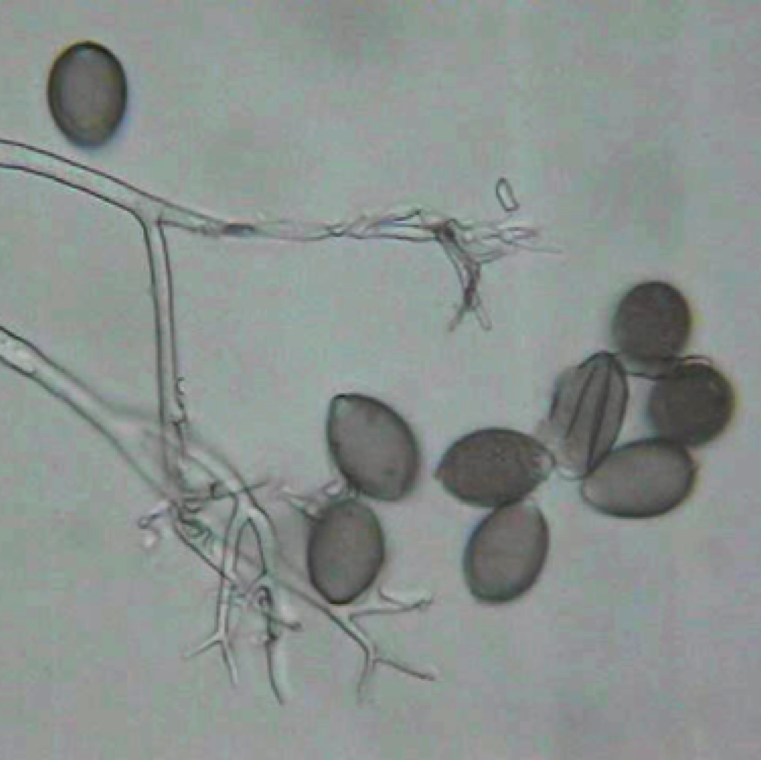

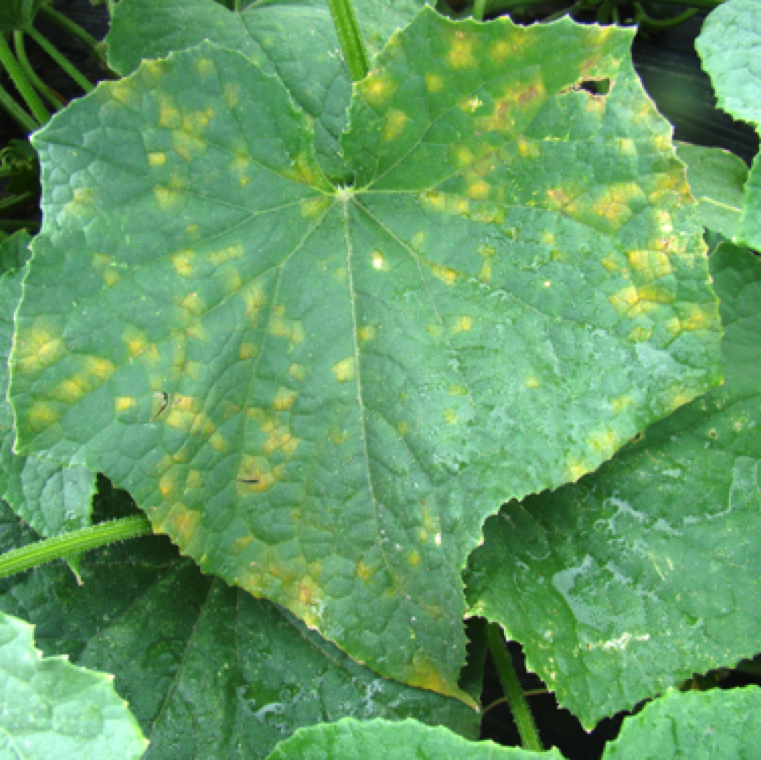
Downy mildew is almost exclusively a foliar leaf spot problem of cucurbits. The oomycete pathogen is an obligate parasite that requires a host to survive during harsh winter months.
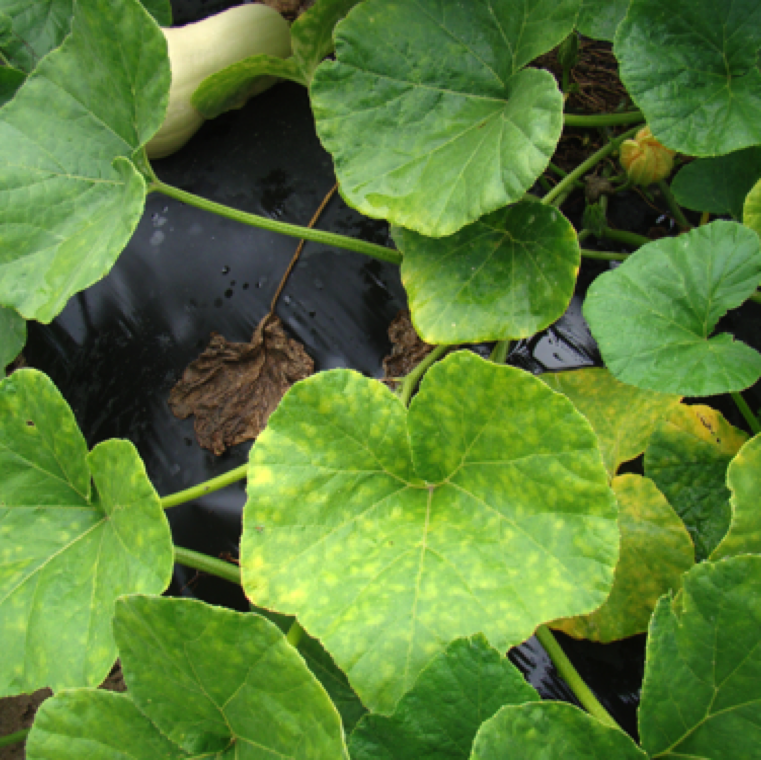
Leaf spots vary in appearance between cucurbit species and within cucurbit species. Leaf lesions are initially yellow and irregular as seen here on butternut squash.
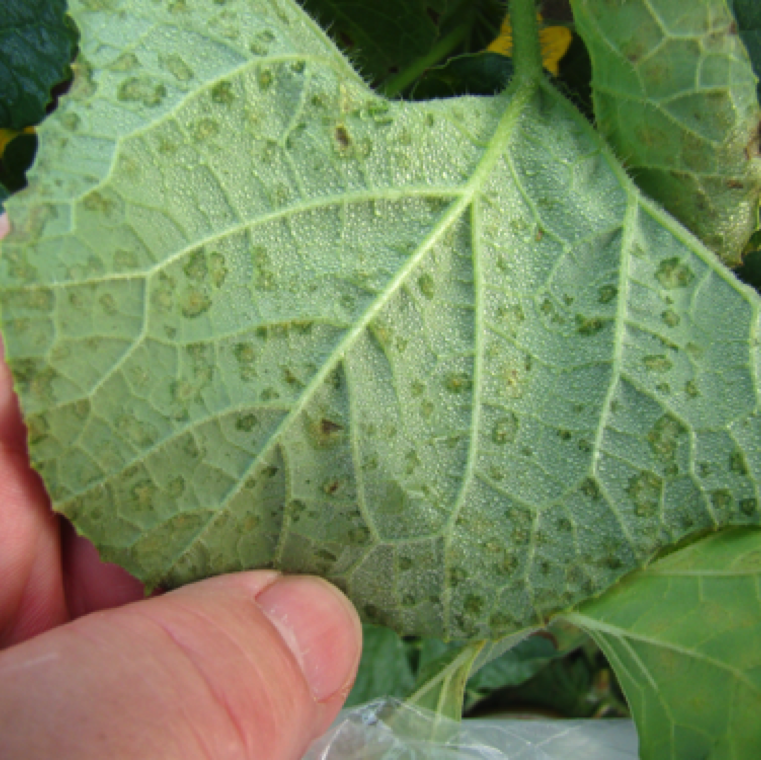
Downy mildew lesions with water-soaked appearance on the underside of the leaves. The yellow spots starts changing to necrotic spots as the infection gets severe as seen here on cucumber.
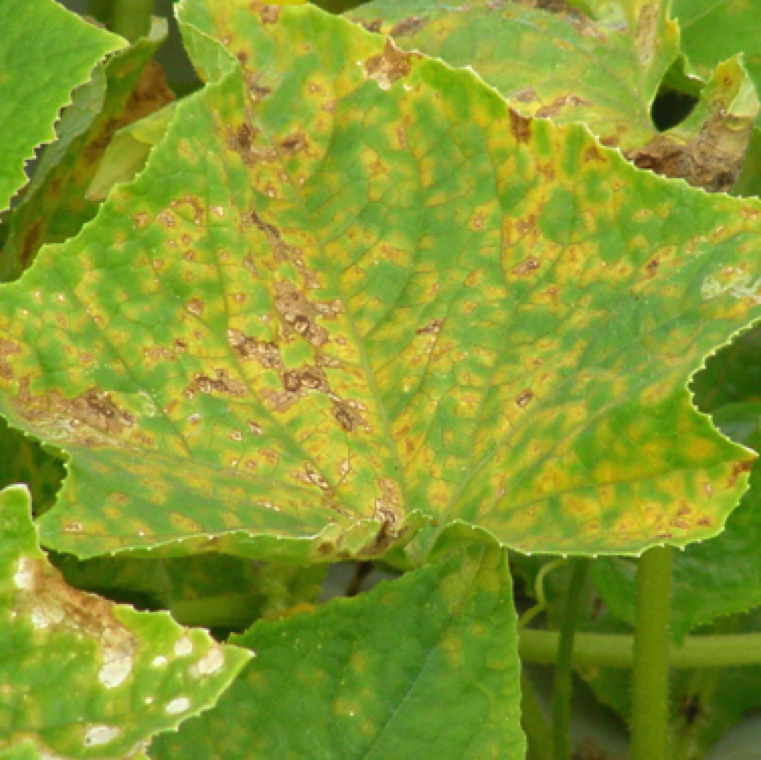
Lesions on cucumbers are angular rather than having irregular borders and are vein limited. Lesions start on the older crown leaves and then progress to the newer distal leaves.
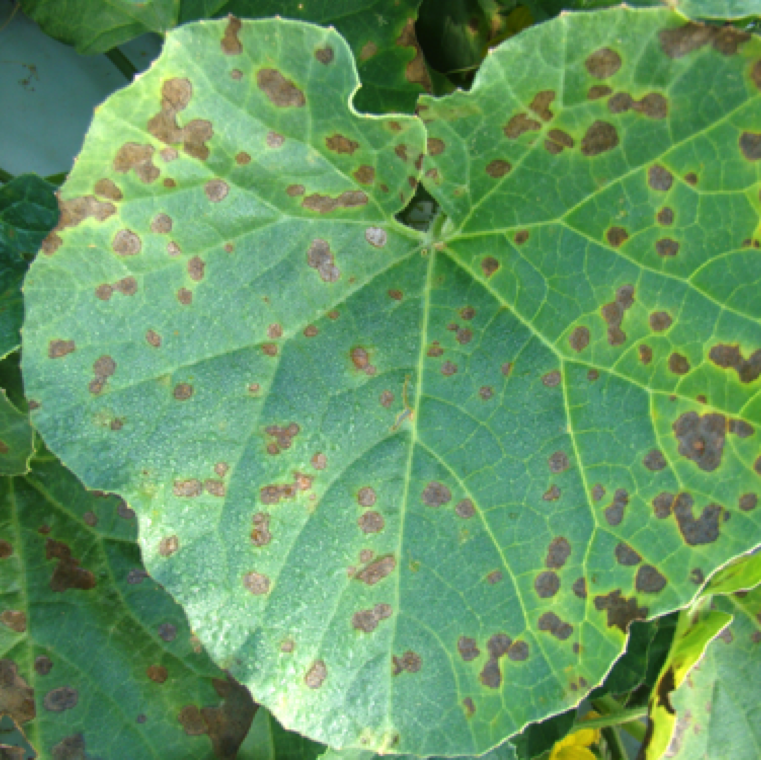
The yellow spots starts changing to necrotic spots as the infection gets severe as seen here on cantaloupe. Large sections of necrotic area develop on the regions with yellow spots.
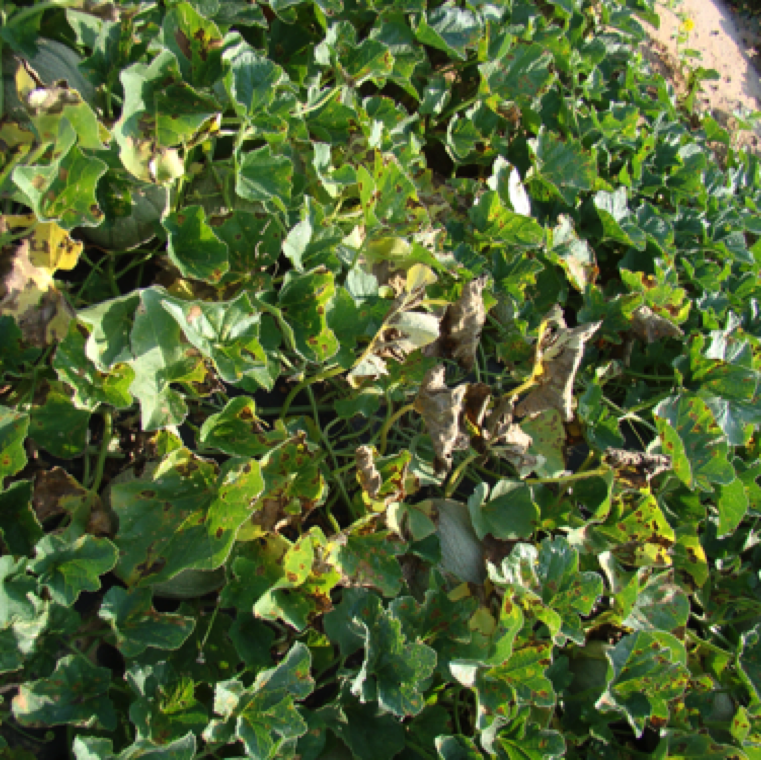
The yellow spots starts changing to necrotic spots as the infection gets severe as seen here on cantaloupe. The disease can cause major yield losses in cucurbit production.

Downy mildew symptoms on watermelon tends to be distinct compared to other cucurbits. The symptom start as small yellow spots that becomes dark necrotic.

The small necrotic spots merge to form large blighted areas on watermelon appropriately referred by growers as "wildfire". At this stage the disease is already difficult to manage.
DOWNY MILDEW
Oomycete causal agent: Pseudoperonospora cubensis
Cucurbit diseases

